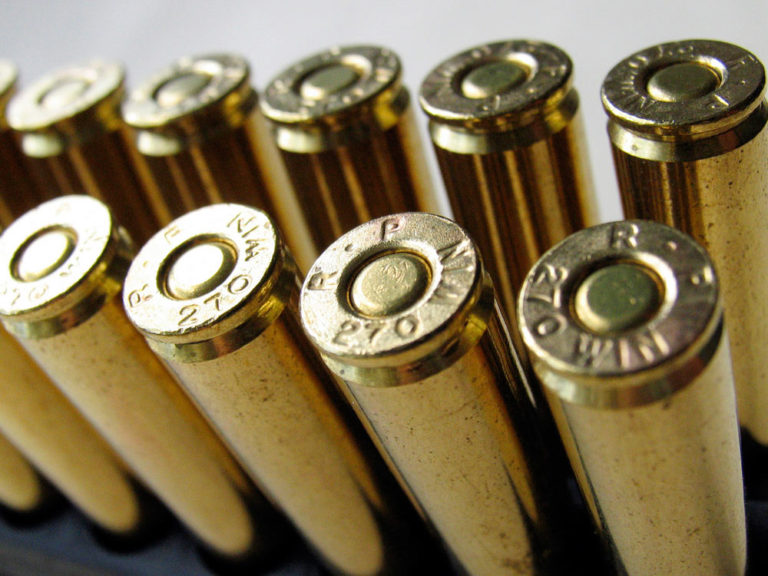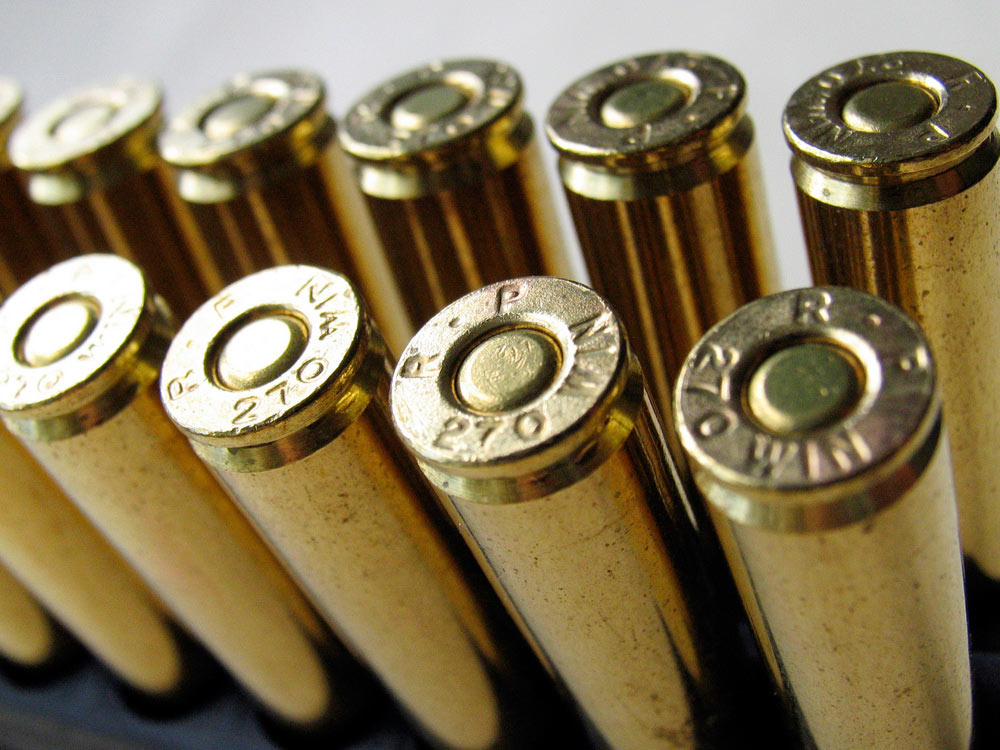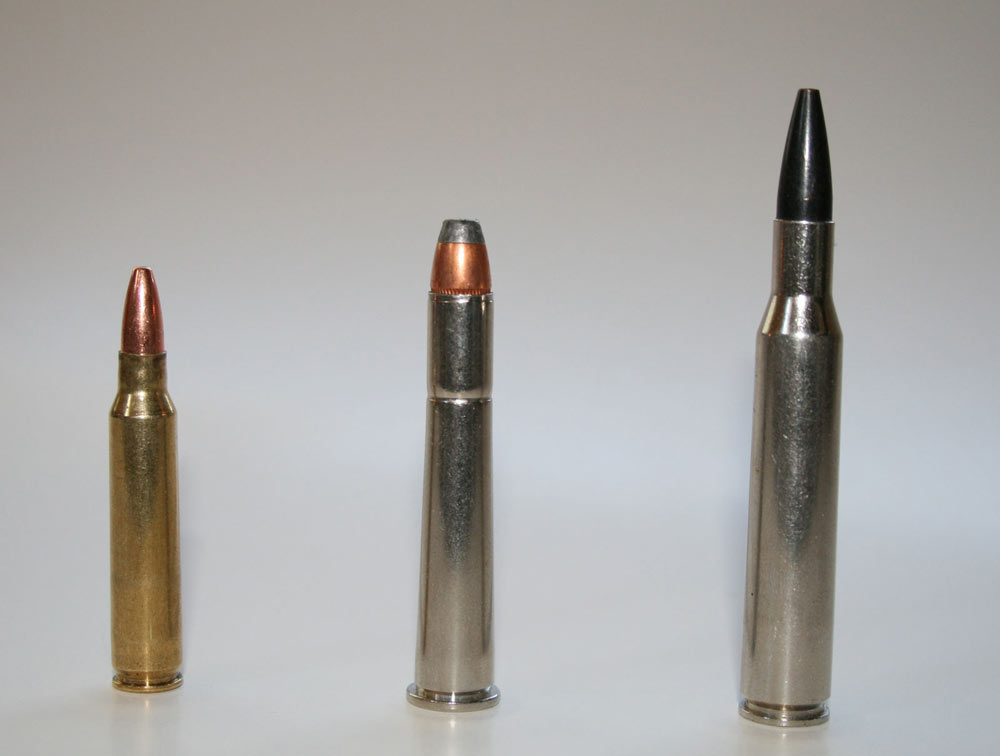

One of my favorite cartridges, and the one I've personally used more than any other in a lifetime of hunting, is the .270 Winchester.
I was turned on to the cartridge by reading Jack O'Connor's magazine articles and books. I grew up reading O'Connor's prose when he was the Arms & Ammunition Editor of Outdoor Life magazine, and arguably the most influential outdoor writer ever.
Winchester engineers developed the cartridge in 1923, and introduced it to the shooting public in their new Model 54 rifle in 1925. The hype accompanying the introduction advertised it as delivering a velocity of 3,160 feet-per-second using a 130-grain bullet. That got O'Connor's attention and he ordered one with a Lyman 48 receiver sight. It proved to be a lifelong partnership between O'Connor and the cartridge.
In the December 1943 issue of Outdoor Life, he wrote, “Assuming that a cartridge can make its way on merit alone, that cartridge is the .270 W.C.F. In its early years it sat in the corner, dressed in sackcloth and covered with ashes, while few riflemen suspected that underneath it had a figger like Miss America, a disposition like an angel, and that it could bake pies like Mother used to make.”
O'Connor used the cartridge all over the world and wrote reams of material about how well it performed in the hunting fields.
I got my first .270 chambered rifle in about 1963 or so. I've not been without at least one rifle in that chambering since. I presently have five in my battery. Several others have passed through my safe during that time.
All together, I've probably owned fifteen or twenty rifles, perhaps more, chambered for the .270, and all I've owned, except one, were superbly accurate. That one rifle had a nagging problem of putting the first shot through a cold barrel some 12 inches higher that the second and subsequent shots. After that first shot, it too placed the rest of its shots in very tiny groups.
The rifle was a very lightweight Husqvarna Mauser with a pencil thin 22” barrel, and stocked to the muzzle `ala Mannlicher. I sold it to a fellow that was going to have it custom stocked and he was sure that would solve the problem. I never found out if it did or not. All the rest that have come my way have been trouble free and deadly accurate.
My favorite and the one that I've used the most by far, is my old David Miller Co. custom that I've owned since the mid-1980s. David started with a Mauser actioned Browning factory Safari Grade rifle. Before starting on the project, he took it to the range and found it was very accurate, shooting under MOA groups, so he retained the factory barrel. He went through the action inside and out, built a fine custom stock from English walnut, and sent it on its way to a client. Whether he cut the factory barrel or not I can't say and I never asked.
When I got the rifle, the barrel was 22”. I suspect that in its factory guise, it was probably 24” but can't say for sure.
A couple years later, the owner of the rifle got seriously into competitive shotgun shooting, and traded the rifle in on a high-grade shotgun. David found out about it, and bought the rifle from the dealer and offered it to me for a reasonable price (for a Miller rifle).
I've used it for most of my hunting since. My handload for it consists of 59.5 grains of H4831 pushing any good 130-grain bullet. That gives me 3130 fps through the 22” barrel, and that load has taken everything from a 50-60 pound roe deer up to and including a 1500 pound Alaska-Yukon moose, and about everything in between those extremes. If there is a better killer of animals in those ranges, I've yet to find it.

O'Connor wrote of loading his .270s a bit hotter than I do. His load was 62 grains of H4831 pushing a 130-grain bullet at about 3,200 fps. He must have used a super drop tube for those loads as that has to be a really compressed load.
I loaded a few rounds at 60 grains, but they weren't as accurate as my 59.5-grain loads, so I standardized on that load. It has worked exceedingly well in all of my .270 rifles except one. I have a Heym SR-20 rifle that must have a tighter chamber or tighter bore as my load is a bit warm in that rifle. I dropped back to 58.0 grains in that rifle, which works just fine, and I lose very little velocity for some reason.
As an aside that some might find interesting, the parent case for the .270 is most often thought to be the .30-06 case. However, Winchester, when developing the cartridge, did not use the .30-06 as the parent case, but rather the earlier, and slightly longer, .30-03 case. Why they did so is a mystery to me. Whatever the reason, the .270 has worked very nicely for almost nine decades now, and is still going strong.
At my age, I'm sure I could keep one of my .270s, and get rid of everything else, and use but that one rifle for the remainder of my hunting that I have ahead of me. That, and my AYA Nr. 2 28 bore, would cover the waterfront. Hmmm, that's a thought!

Next Step: Get your FREE Printable Target Pack
Enhance your shooting precision with our 62 MOA Targets, perfect for rifles and handguns. Crafted in collaboration with Storm Tactical for accuracy and versatility.
Subscribe to the Gun Digest email newsletter and get your downloadable target pack sent straight to your inbox. Stay updated with the latest firearms info in the industry.

![Best Concealed Carry Guns In 2025 [Field Tested] Wilson Combat EDC X9S 1](https://gundigest.com/wp-content/uploads/Wilson-Combat-EDC-X9S-1-324x160.jpg)


![Best 9mm Carbine: Affordable PCCs [Tested] Ruger Carbine Shooting](https://gundigest.com/wp-content/uploads/Ruger-Carbine-Shooting-100x70.jpg)
![Best AR-15: Top Options Available Today [Field Tested] Harrington and Richardson PSA XM177E2 feature](https://gundigest.com/wp-content/uploads/Harrington-and-Richardson-PSA-XM177E2-feature-100x70.jpg)
